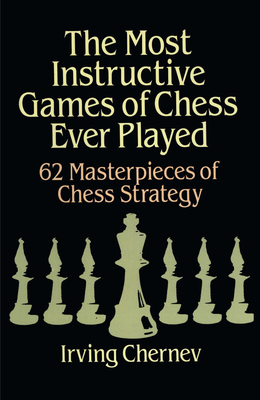




Chess endings have an immediacy lacking in chess endgame or chess problems: endings are not theoretical or composed, but actual board positions, the point in every game when the superfluous falls away, leaving only the essential. José Raúl Capablanca (1888-1942) had no need for isolated artistic theory or compositions -- he composed and created chess art as he played. All of his genius -- intuitive, tactical, strategic, logical -- all of his art shines clearest in his endings, as he himself was proud to declare, advising others to study them carefully. In order to improve your game, he said, you must study the endgame before anything else; for whereas the endings can be studied and mastered by themselves, the middle game and the opening must be studied in relation to the endgame.
The best way to follow Capablanca's advice is through this -- the only book devoted to his great endings, 60 complete games emphasizing the grand finale but annotated throughout.
Irving Chernev communicates in his notes the mystery and wonder as well as the delight in discovering again and again the original, fertile mind of chess's greatest born player. Virtuoso, exquisite, profound, inspired, elegant, and fiendish ingenuity describe match and tournament games and endings against Alekhine, Steiner, Marshall, Nimzowitsch, Lasker, Réti, and others, the best in the contemporary chess world. Capablanca's eleventh game in the 1901 Cuban championship (which he won, aged 12) surpasses any accomplishment by such other prodigies as Morphy, Reshevsky, and Fischer. From age 12 through the last game in the book (nearly four decades later against Reshevsky at Nottingham, 1936), Capablanca fashions endgames in tense tournament atmosphere that seem like delicate, precise instruments dreamt at leisure.
Here then is the essence of Capablanca, analyzed for the instruction of players and the pleasure of chess connoisseurs. Included are indexes of openings, themes in the endings, and opponents, as well as a bibliography and record of tournament and match play. Capablanca: for players, the epitome of the endgame; for readers, a classic chess study.

Here are 62 masterly demonstrations of the basic strategies of winning at chess, compiled and annotated by one of the game's most admired and respected writers. Each game offers a classic example of a fundamental problem and its best resolution, described and diagrammed in the clearest possible manner for players of every level of skill.
As Irving Chernev observes in the Introduction, Who will doubt the tremendous power exerted by a Rook posted on the seventh rank after seeing Capablanca's delightfully clear-cut demonstration in Game No. 1 against Tartakower? And who will not learn a great deal about the art of handling Rook and Pawn endings (the most important endings in chess) after playing through Tarrasch's game against Thorold?
Chernev's lively and illuminating notes on each game reveal precisely how Capablanca, Tarrasch, and other masters -- Fischer, Alekhine, Lasker, and Petrosian among them -- turn theory into practice as they attack and maneuver to control the board. Readers will find their techniques improving with each lesson as Irving Chernev dissects winning strategies, comments on alternate tactics, and marvels at the finesse of winning play, noting at the end of his Introduction: I might just as well have called this collection The Most Beautiful Games of Chess Ever Played.






Both an instruction book and an engaging meditation on the joys of chess, this is the final work by one of the most successful chess writers of all time. Irving Chernev blends anecdotes with his observations on inspiring moves and combinations by well- and lesser-known players, including Troitzky, Réti, Kasparyan, Benko, Kubbel, Rinck, Grigoriev, and many others.
Each example is introduced with a cue (White to play and win) and includes the composer's name, the date of its original publication if available, a clear diagram with an algebraic grid, and the winning variation presented in algebraic notion. Chernev's sparkling text is complemented by introductions by national Master Bruce Pandolfini and Adam Hart-Davis, an editor who worked with Chernev and who helped assemble this posthumous publication.
Appropriate for players at every level, 200 Brilliant Endgames promises to assist chess enthusiasts in sharpening their endgame skills and to enhance their pleasure and satisfaction in the game.

Winning Chess is a truly classic chess book, beloved of chess-mad teenagers since it was first published in 1970, updated and repackaged in algebraic format. Written in lively, conversational style by two prolific and popular chess authors, it is aimed at players who have gone past the beginner stage and want to take their game to a whole new level. Its imaginative themes and instructional method are timeless, and the whole book is shot through with fun and humour.

